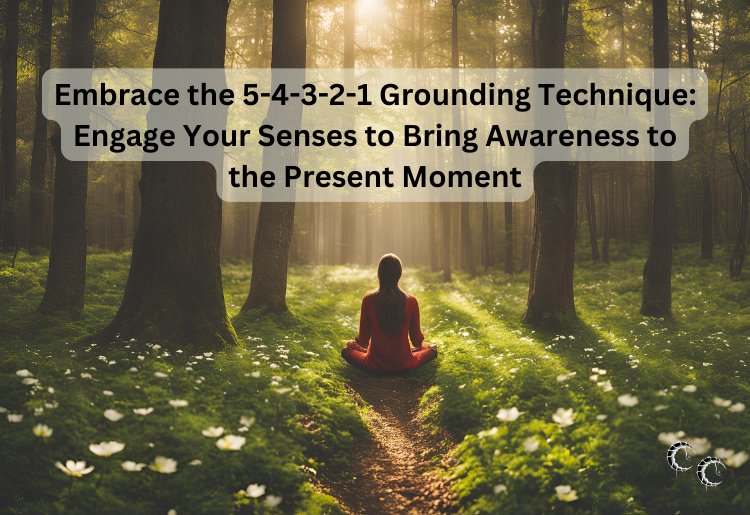Embrace the 5-4-3-2-1 Grounding Technique: Engage Your Senses to Bring Awareness to the Present Moment

In a world that often feels overwhelming, grounding techniques are invaluable tools for staying present and finding calm amidst chaos. The 5-4-3-2-1 Grounding Technique is a simple yet powerful mindfulness exercise that uses your senses to anchor you in the here and now. Whether you're coping with anxiety, stress, or simply seeking a moment of peace, this technique can help you reconnect with your surroundings and yourself.
What Is the 5-4-3-2-1 Grounding Technique?
This method involves engaging all five senses—sight, touch, hearing, smell, and taste—to gently guide your attention away from racing thoughts and back to the present. By methodically identifying elements in your environment, you cultivate mindfulness and a sense of control over your mental state.
Here’s how it works:
Step 1: See – Acknowledge 5 Things You Can See
Take a moment to look around and notice five things in your environment. These could be big or small, like the color of the walls, the pattern on your clothing, or the texture of a nearby plant. Observe each detail carefully, focusing on shapes, colors, or movement.
Step 2: Touch – Notice 4 Things You Can Feel
Shift your attention to touch. Identify four sensations you can feel, such as the fabric of your clothing, the warmth of a cup in your hand, the texture of the chair you’re sitting on, or even the feeling of your breath moving in and out. This tactile awareness can help ground you physically.
Step 3: Hear – Identify 3 Things You Can Hear
Tune into the sounds around you. Notice three distinct sounds, whether they’re loud or subtle. This might include the hum of an appliance, birds chirping outside, or the sound of your own breathing. Allow yourself to truly listen and focus on each sound individually.
Step 4: Smell – Recognize 2 Things You Can Smell
Bring your attention to your sense of smell. Identify two scents in your environment. If there aren’t any immediate smells, try finding something nearby to sniff, like a scented candle, a cup of tea, or fresh air from an open window. Even neutral smells can be grounding.
Step 5: Taste – Focus on 1 Thing You Can Taste
Lastly, turn to your sense of taste. This could be the lingering taste of a meal, a sip of water, or a piece of gum. If you’re not currently tasting anything, consider keeping something simple like mints or tea on hand for moments like this.
Why Does the 5-4-3-2-1 Technique Work?
This grounding exercise is rooted in mindfulness, which helps interrupt cycles of anxiety and stress by focusing your attention on the present moment. By engaging your senses, you:
- Shift Attention: Redirecting focus away from intrusive thoughts reduces their intensity.
- Slow Down: The methodical nature of the technique encourages a slower, more deliberate pace, which calms the nervous system.
- Enhance Awareness: It strengthens your connection to your environment, fostering a sense of safety and presence.
Tips for Practicing the Technique
- Practice Regularly: Incorporate the technique into your daily routine, even when you're not feeling overwhelmed. This builds familiarity and makes it easier to use in moments of distress.
- Adjust as Needed: If one of your senses is less accessible, focus on others. For instance, if you're in a scent-free area, skip the smell step and concentrate more on touch or sight.
- Pair with Deep Breathing: Combine the technique with slow, deep breaths to amplify its calming effects.
- Use Anytime, Anywhere: This technique doesn’t require special tools or settings, making it accessible whether you’re at work, home, or on the go.
Conclusion
The 5-4-3-2-1 Grounding Technique is a straightforward yet effective way to bring awareness to the present moment. By engaging your senses, you can find calm, clarity, and connection in even the most stressful situations. Embrace this practice as a tool for mindfulness and mental well-being, and let it remind you that peace is always within reach.































